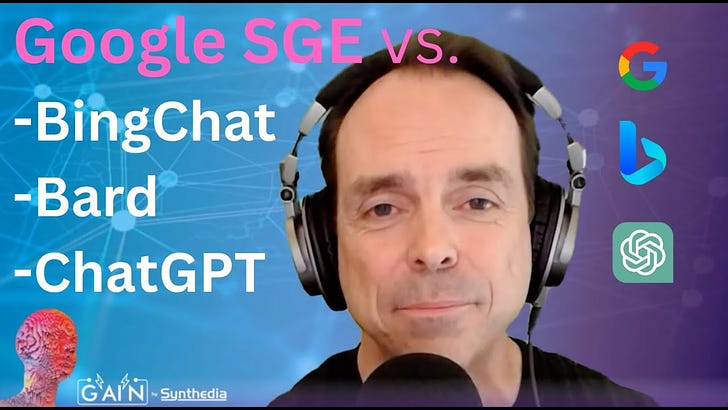Google Rolls Out Access to LLMs, Text-to-Image, Generative Code, and More
The fight for customers is now on!
Google was long thought to be a leader in what we now call generative AI. The enormous popularity of GitHub Copilot in the AI-enable coding, Stable Diffusion and Midjourney in the AI text-to-image segment, Whisper for speech-to-text, and ChatGPT and GPT-3 in the generative chat and large language model (LLM) segment caught the company off guard. Its products, such as Codey, Imagen, Whisper, LaMDA, and PaLM, were not ready for commercial release. Google suddenly looked like a generative AI laggard.
Google suddenly looked like a generative AI laggard.
However, Google CEO Sundar Pichai issued a famous “code red” in December 2022, changed company policy, and challenged staff to meet the ChatGPT moment head-on. In January, the New York Times revealed that Google would release at least 20 new generative AI products in 2023. Six months after the “code red,” Google announced that API access to several generative AI foundation models is now generally available.
AI Model Garden
Developers can use the Vertex AI Model Garden to access foundation models and APIs for text, chat, images, code, and speech recognition. The foundational models are available on Google Cloud for fine-tuning and customization. These include:
Text Generation - PaLM for Text
Chat Applications - PaLM for Chat
Image Generation - Imagen
Code Completion - Codey
Speech-to-Text - Chirp
Google is also offering access to pre-trained APIs for speech-to-text, natural language processing (NLP), translation, and vision. Internally developed open-source models such as BERT, T5-FLAN, ViT, and EfficientNet are also available.
The company indicates that third-party foundation models will soon be available through the same service. Foundational model developers that have already announced agreements with Google include AI21 Labs, Anthropic, Cohere, and Stability AI. I would expect these to be available very soon.
Easing the Adoption Journey
Google is also trying to reduce the barriers to adoption. The company must recognize the strong enterprise interest in generative AI is accompanied by strong trepidation. The new Vertex and Generative AI studio offerings are complemented by a number of free training materials, low-code tooling, and even consulting services for Generative AI. For example:
Low-code and no-code tooling
Vertex AI provides low-code tooling and up-training capabilities so practitioners with a wide variety of expertise can leverage machine learning workloads. With Generative AI Studio, developers can tune and deploy foundation models for their use cases via a simple UI. And, with our off the shelf APIs, developers can easily call upon pre-trained models to quickly solve real-world problems.
Google’s Generative AI Customers
And this isn’t just a product announcement. Google highlighted eight companies using its generative AI models. This might not be comparable to the 4,500 customers claimed by Microsoft for its Azure OpenAI Services product, but it is a start and confirms the models are ready for production use.
Some of the customers Google has featured previously include Character.ai, Deutsche Bank, Uber, and Wendy’s. Additional customers announced this week include:
GA Telesis, a global airline supplier, is using generative AI to sift through the hundreds of thousands of parts orders it receives annually, allowing it to serve customers quicker and more effectively.
Mayo Clinic, an early adopter of Enterprise Search in Generative AI App Builder, will use our services to help clinicians and researchers more easily find the information they need, and ultimately to help improve patient outcomes.
PhotoRoom, an AI-based photo editing app for e-commerce businesses, is leveraging our expertise in scaling large AI models to offer studio-quality images to more businesses than ever before.
Priceline will use generative AI across its business, creating enhanced travel experiences for customers and improved workflows for employees.
The Foundation Model Wars = Cloud Wars
Google looks like it has mostly righted the ship that was clearly listing in stormy seas brought on by OpenAI’s and Microsoft’s aggressive market development. It still has some catching up to do, but the pieces are now in place for Google to grow its generative AI business.
"Google Has No Moat" in AI. A Fascinating Memo on the AI Market from Within Google.
TLDR; A Google researcher purportedly wrote a memo suggesting Google is being complacent while open source generative AI competitors are passing it by and may make it irrelevant. The memo goes into depth about how quickly open source solutions are advancing the market and closing the gap with the giant foundation model providers like OpenAI and Google






